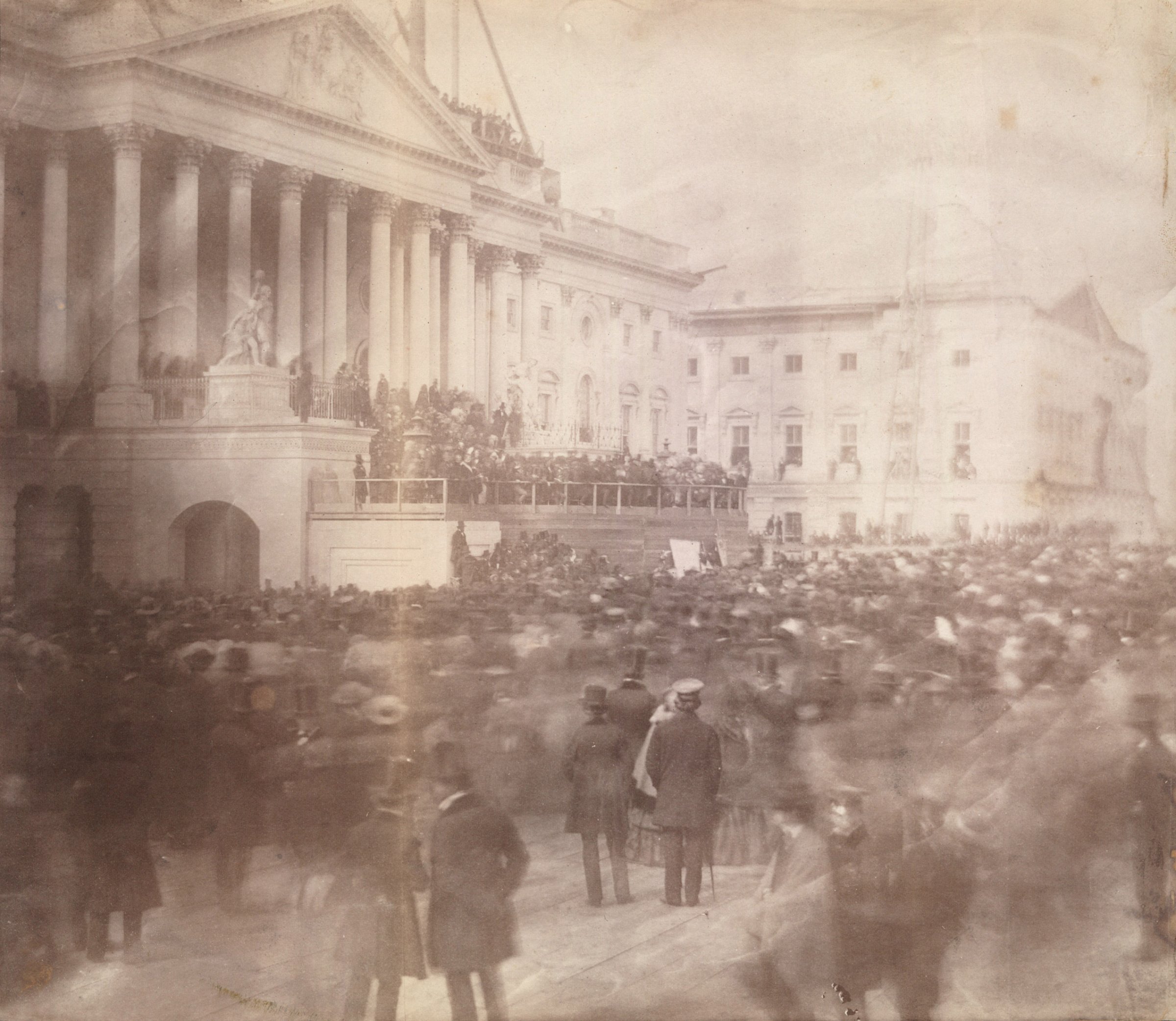
The 1850s were a significant period of growth in the history of photography. The wet collodion process, which was invented in 1851, gave photographers the ability to make direct contact prints from a glass negative. This process did have its difficulties — a portable darkroom was needed to accompany the photographer and long exposures were still often necessary. But the new process was enough of an improvement that it allowed photographers to document many landmark events for the first time, and the period saw photographic milestones ranging from the first war photography to groundbreaking nature photography.
And, in 1857, the first known photograph of a Presidential Inauguration was captured.
This image, seen above, was taken by John Wood, who worked for the Architect of the Capitol under Montgomery C. Meigs. According to a presentation given by Wayne Firth (retired Senior photographer at the Architect of the Capitol) in 1996 at the National Building Museum at the U.S. Capitol, Meigs, who was in charge of the construction of the Capitol at the time, hired Wood as a “photographic draftsman” for the building of the Capitol. His job was to photograph the drawings of the construction so they could be easily duplicated.
Get your history fix in one place: sign up for the weekly TIME History newsletter
During Wood’s tenure at the Capitol, his job grew. And, when Meigs was put in charge of constructing a platform for the Inauguration ceremony, he also constructed a platform for Wood to set up his camera and photograph the inauguration of James Buchanan on March 4, 1857.
Photographer Wood would eventually leave his post at the Architect of the Capitol and go on to photograph in the Civil War. According to the Library of Congress, Wood worked for the Architect of the Capitol from 1856 to 1861 and then moved onto photographing maps in the war for Gen. George McClellan.
Little is known of his later life and works, but his legacy will live on forever with this photo.
More Must-Reads from TIME
- Why Biden Dropped Out
- Ukraine’s Plan to Survive Trump
- The Rise of a New Kind of Parenting Guru
- The Chaos and Commotion of the RNC in Photos
- Why We All Have a Stake in Twisters’ Success
- 8 Eating Habits That Actually Improve Your Sleep
- Welcome to the Noah Lyles Olympics
- Get Our Paris Olympics Newsletter in Your Inbox
Contact us at letters@time.com